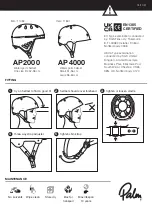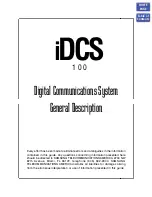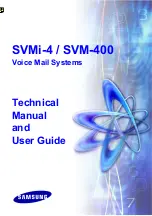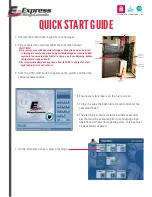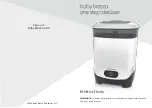
44 |
P a g e
MAINTENANCE
Disinfecting
For maximum effectiveness, disinfection procedures are typically performed after cleaning. Keep the
following points in mind when disinfecting the unit.
•
Turn off and disconnect the unit to safeguard against electrical hazards.
•
Disinfect the unit chamber using commercially available disinfectants that are non-corrosive,
non-abrasive, and suitable for use on stainless steel and glass surfaces. Contact your local
Site Safety Officer for detailed information on which disinfectants are compatible with your
applications.
•
If permitted by your protocol, remove all removable interior accessories (shelving and other
non-attached items) from the chamber when disinfecting.
•
Disinfect all surfaces in the chamber, making sure to thoroughly disinfect the corners.
Exercise care to avoid damaging the sensor probes.
•
Gas concentrations from evaporating disinfecting agents can inhibit growth or cause
metabolic symptoms in microbiological sample populations. Make sure that chlorines,
quaternary ammonias, or any other overtly volatile disinfecting agents have been rinsed or
otherwise removed from the chamber surfaces, prior to placing samples in the chamber.
When disinfecting external surfaces, use disinfectants that will not damage painted metal, glass, and
plastic.
M
INIMIZING
C
ONTAMINATION
E
XPOSURE
Suggestions for minimizing exposure of the incubator chamber to potential contaminants.
•
Maintain a high air quality in the laboratory workspaces around the incubator.
•
Avoid placing the incubator near sources of air movement such as doors, air vents, or high
traffic routes in the workspace.
•
Minimize the number of times the incubator chamber door is opened during normal
operations.
M
AINTAINING
A
TMOSPHERIC
I
NTEGRITY
Periodically, inspect the door latch, trim, catch, and gaskets for signs of deterioration. Failure to
maintain the integrity of the door system shortens the lifespan of the incubator.































